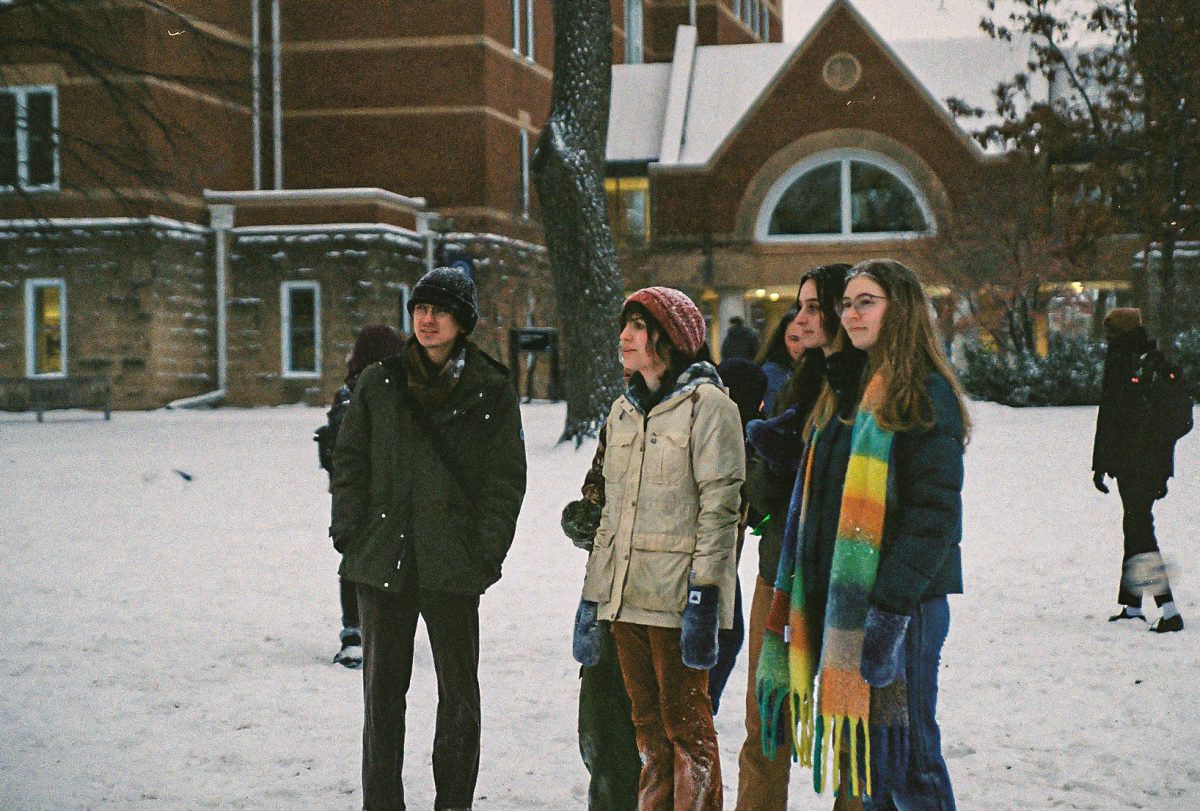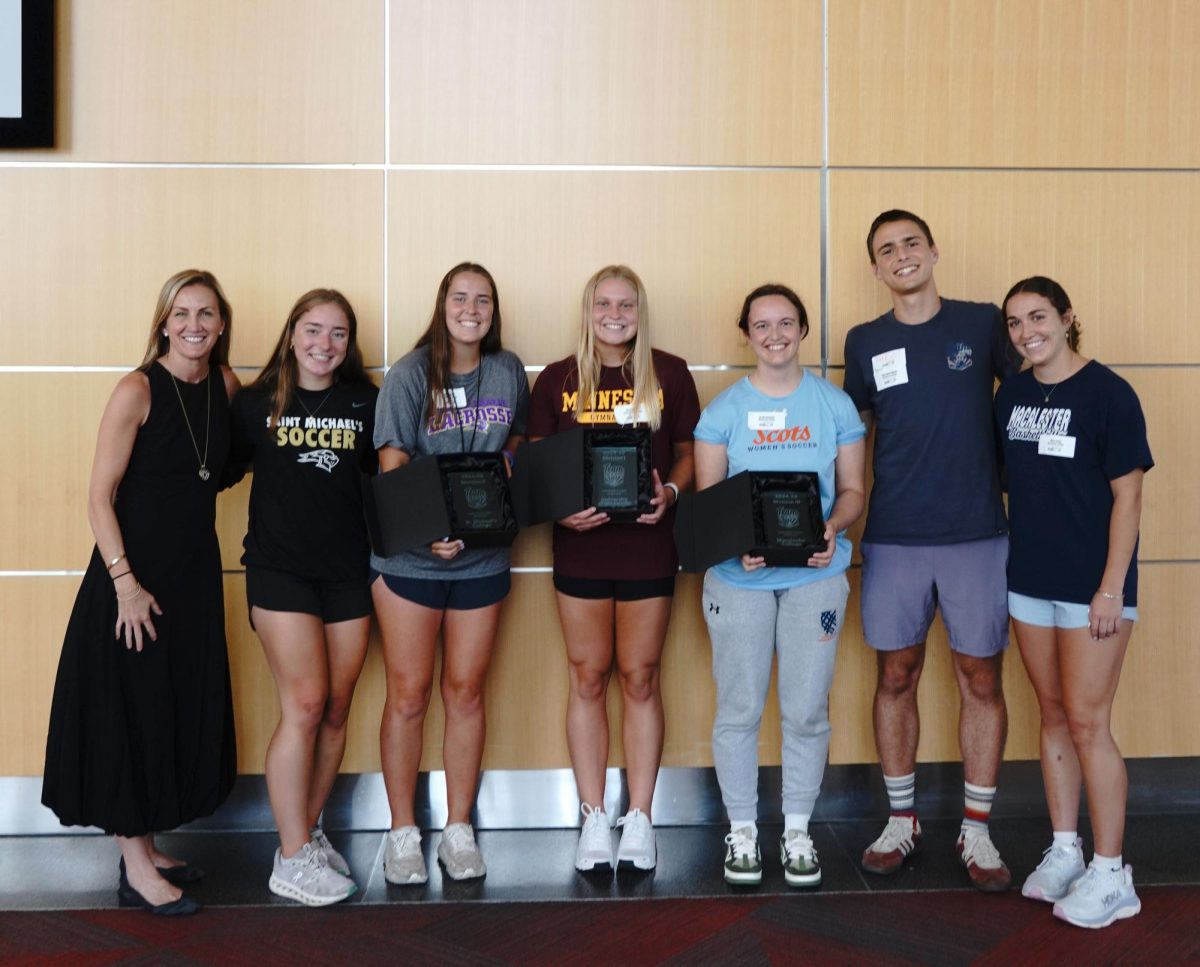Black History Month in the United States originated in the mid-1920s with Carter G. Woodson, a Harvard graduate and historian, who along with the Association for the Study of Negro Life and History established the first Black History Week in February 1926. The week in February was strategically chosen to include both Fredrick Douglass’s and Abraham Lincoln’s birthdays, and Woodson hoped for the week to promote awareness of African American contributions to the world.
The first mention of Black History Month (BHM) in The Mac Weekly archives appears in 1972, encouraging the campus to observe the occasion. However, Macalester’s observance didn’t seem to extend beyond recognition in the paper, as no mention of any campus-wide events or other marks of observance occur in the archives.
Many activists around the country began celebrating the week as a month in the 1940s, but the month-long celebration was not officially recognized until 1976. Thus after four years of recognizing Black History Week, Macalester began celebrating Black History Month in 1976.
February of 1977 featured a performance from Sounds of Blackness, an internationally recognized, Grammy Award-winning all-black choir that began at Macalester in 1969, as well as several other speakers and performances.
In response to few students attending events in 1977, a 1978 advertisement in The Mac Weekly reminded Macalester students that “Black History Month is a celebration by blacks but not only for blacks.” The 1978 observance included a memorial for Steven Biko, a prominent South African Civil Rights activist and founder of the South African Students’ Organization, presented by Macalester and St. Thomas students in Weyerhaeuser Chapel. Biko was tortured and killed in September 1977.
In 1979, The Mac Weekly staff member Don Smith wrote, “Black History Month is a success again this year, but white students aren’t participating as much as they could be.” Smith interviewed the then President of BLAC, Jim Mills, in the same article. Mills agreed and hoped to expand BHM to engage a larger base of students. He also hoped to make BHM a celebration that stretched beyond campus.
“I want to get some intermingling between the campus and the community,” Mills said.
In 1981, BHM events did not occur due to lack of funding from the school. The black community at Macalester was frustrated by a general lack of institutional support. Black enrollment had dropped and there were no tenured black faculty at Macalester. The Mac Weekly staff member Becky Cameron explored aspects of racial tension at Macalester in a March 1981 article. She reported that in addition to low enrollment and few black faculty members, black students found that “everyone assumes that since they are Black [sic], they come out of a monolithic cultural background.”
In 1982, then Georgia Senator Julian Bond gave the BHM keynote address. The Mac Weekly writer Patrick Dobin noted that after the previous year’s cancellation of events, BHM of 1982 came “at a time when some people [were] questioning the school’s commitment to blacks and other minorities.”
In the ’70s and ’80s, many of the BHM events took place at the Black House, an on-campus space that served as “Macalester’s cultural, center and meeting place for Blacks,” according to a 1969 Mac Weekly issue. At the time, there was also a Hispanic house and an Indian house. All these houses were closed in 1983 and replaced by multicultural houses that were not specific to any one culture.
Dr. Yosef ben-Jochannan, an author and professor at Cornell University, served as Macalester’s 1983 keynote speaker. As reported in a 1983 Mac Weekly issue, ben-Jochannan called Macalester out as “part of the racist fabric,” noting, “There are thousands of books which you can read on African history, but you won’t find them on this campus.”
Rosa Parks spoke at St. Thomas in 1986 to an audience of about 800.
“There will always be an opposition,” she said, “but I have the faith, hope and confidence that the good will someday overcome the evil.” Parks finished by remarking, “We must all look within ourselves,” she said, “and find that inner spark that will make the world a better place to live.”
This year, as part of the BHM occasion, Nikki Giovanni spoke at Macalester on February 23. She also spoke at Hamline on February 12, 1987. At that event, Giovanni read a eulogy she wrote for Martin Luther King Jr. and spoke about the role of black women in changing the world. She was quoted as follows in the February 13, 1987 edition of The Mac Weekly: “I think we have done our fair share of changing the world. We have to stand up for our lives. If you and I don’t stand up for life, who will?”






Matt Johnston • Sep 11, 2019 at 9:17 am
Thanks for your post on this site. From my experience, there are occassions when softening upwards a photograph might provide the wedding photographer with a bit of an artsy flare. Oftentimes however, that soft blur isn’t what precisely you had as the primary goal and can usually spoil a normally good photograph, especially if you intend on enlarging the item.
Audrey Peters • Sep 10, 2019 at 4:02 am
I constantly spent my half an hour to read this websiteís posts everyday along with a cup of coffee.
Donna Scott • Sep 4, 2019 at 9:18 pm
I was very pleased to seek out this internet-site.I wished to thanks for your time for this wonderful learn!! I undoubtedly enjoying each little bit of it and I have you bookmarked to check out new stuff you weblog post.